The Independent's journalism is supported by our readers. When you purchase through links on our site, we may earn commission.
Tokyo guide: Where to eat, drink, shop and stay in Japan's capital city
The must-do experiences on a trip to Tokyo
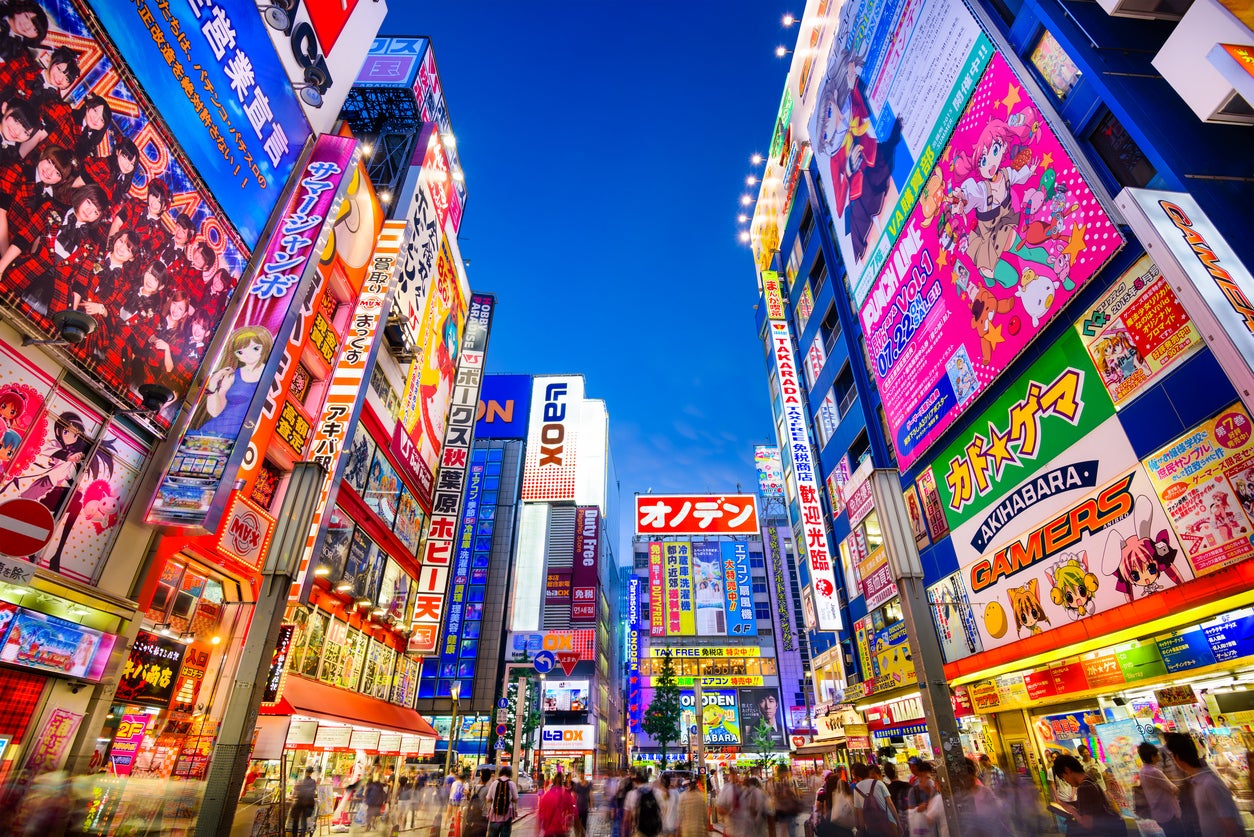
Your support helps us to tell the story
This election is still a dead heat, according to most polls. In a fight with such wafer-thin margins, we need reporters on the ground talking to the people Trump and Harris are courting. Your support allows us to keep sending journalists to the story.
The Independent is trusted by 27 million Americans from across the entire political spectrum every month. Unlike many other quality news outlets, we choose not to lock you out of our reporting and analysis with paywalls. But quality journalism must still be paid for.
Help us keep bring these critical stories to light. Your support makes all the difference.
It’s easy to get lost in Tokyo. Home to massive skyscrapers, neon-lit signs, owl and maid cafes, anime shops, countless restaurants and karaoke bars, the city is always buzzing, always moving, and catching one’s breath requires some effort. But beneath the ultra-modern facade there are also old traditional neighbourhoods and shops, green spaces, and beautiful temples and shrines. Tokyo is a city of contrasts, where cutting edge modernity meets ancient Japanese culture.
What to do
Explore Asakusa
The Asakusa district is as colourful as it is historic. First established as an entertainment hub during the Edo period, today it continues that tradition and is home to cinemas, the Nakamise shopping street with its traditional goods, souvenirs and snacks, and various temples. These include Tokyo’s oldest and most-visited Buddhist temple, Senso-Ji, which was built for Kannon, the goddess of mercy. As visitors approach the temple, they enter through the Kaminarimon (Thunder Gate), a picturesque gate framed by lanterns and statues. The gate was burned in a fire in 1835, but was rebuilt in 1960.
Go Francophile in Kagurazaka
Kagurazaka is Tokyo’s French Quarter. Situated near Iidabashi station, here you’ll find lots of quaint shops, winding, narrow cobblestone alleys, French dining options, upscale ryotei (fine dining restaurants that accept new customers by referral only), private Zen gardens, dainty cafes, and even geisha houses that survive to this day. Finish or start your visit outside the station with tea and dessert at Canal Cafe’s outdoor terrace on the old moat of Edo Castle, and rent a rowing boat to see the district from the water.
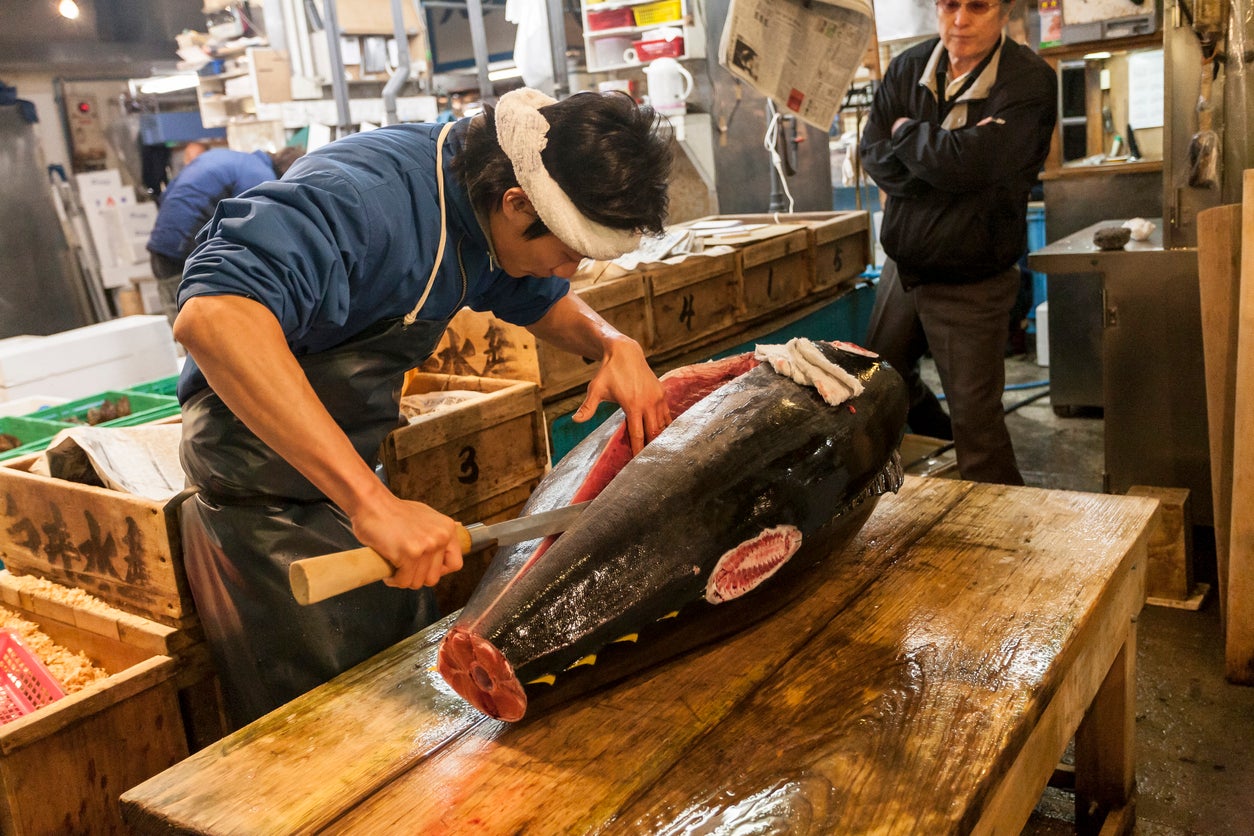
Choose tuna Tsukiji fish market
If you want to catch the infamous Tsukiji fish market, get in there now – there’s a plan to move it to the Toyosu waterfront area by October of this year. There’s something captivating about witnessing the world’s biggest wholesale fish and seafood market in action, and those willing to get up extremely early (2-3am) could be rewarded with one of 120 coveted spots to watch the market’s tuna auction. Not willing to forego sleep? There’s still plenty to do at Tsukiji, like enjoying a sushi breakfast or shopping for knives and seafood-related culinary delights.
Stroll the gardens
Tokyo might be a busy city, but there are plenty of gardens and parks in which to find some tranquillity. Shinjuku Gyoen national gardens is one such oasis, where you’ll find English, French and traditional Japanese gardens and ponds, and beautifully landscaped lawns and plants. Or meander through the park-like Imperial Palace Gardens, which are built where the old Edo Castle used to be.
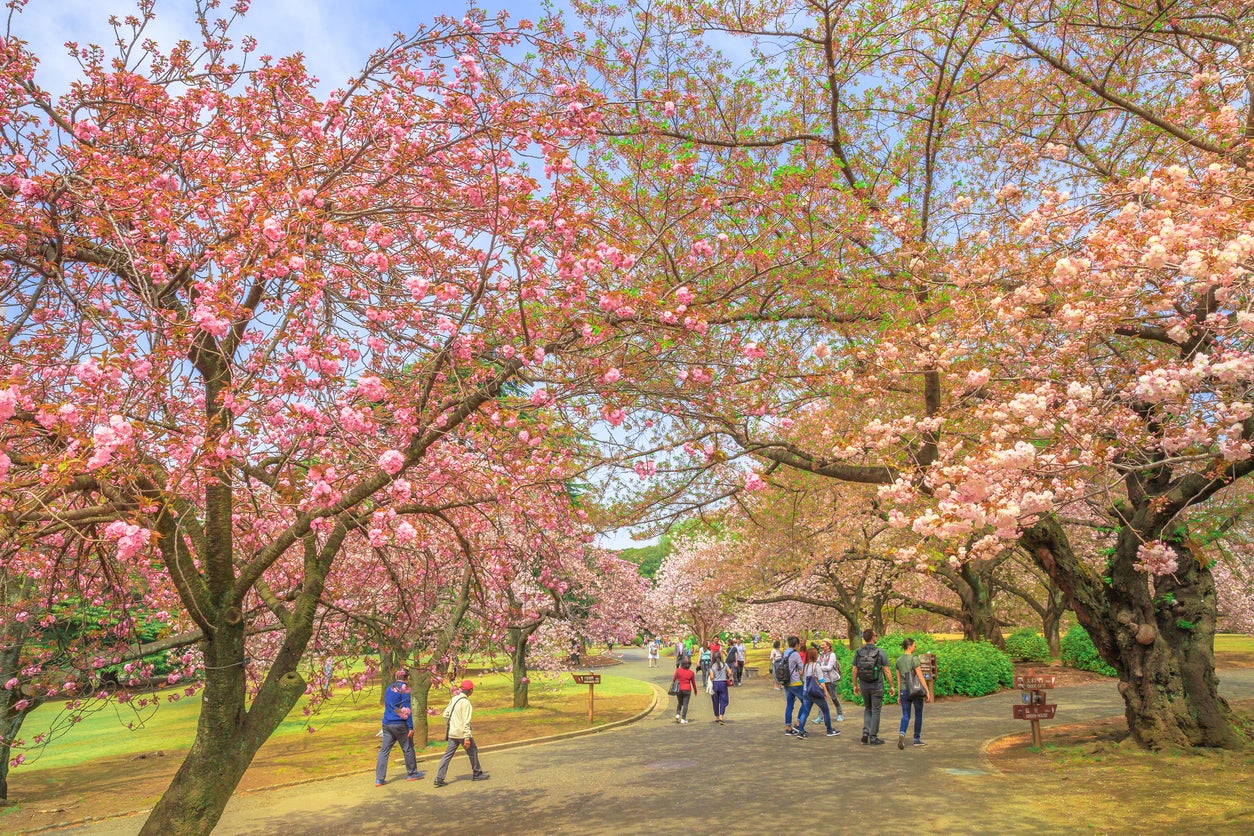
Absorb some artefacts
Japan has a unique and distinct approach towards art, and the Tokyo National Museum is the perfect place to explore the country’s largest collection, which includes paintings, ceramics, armour, masks, and various artefacts. Established in 1872, it’s the oldest Japanese national museum and one of the largest art museums in the world. Open daily 9.30am-5pm and til 9pm on Fridays and Saturdays; entry 620 yen (£4).
Where to stay
There’s nothing quite like celluloid to immortalise somewhere and Park Hyatt Tokyo has become instantly recognisable after Bill Murray and Scarlett Johansson rendezvoused there in Sofia Coppola’s Lost in Translation. The hotel takes over the top 14 floors of a 52-storey building, and the floor-to-ceiling windows offer unparalleled views of the city and Mount Fuji. The rooms are spacious, with clean, neutral design; hotel highlights include the pool atrium and fitness centre on the 47th floor and the seductively lit 2,000-tome library. Doubles from 52,440 yen, room only.
Having opened in June 2017, the Belken Hotel is a newcomer to the Tokyo budget hotel scene. A 15-minute walk to Tokyo Station and five minutes’ walk from Nihonbashi or Kayabacho metro, it’s a convenient base for exploring. The lobby resembles a hipster coffee shop and the rooms are small but clean and equipped with all the amenities needed for a stay – including pyjamas. Singles from 7,000 yen, room only.
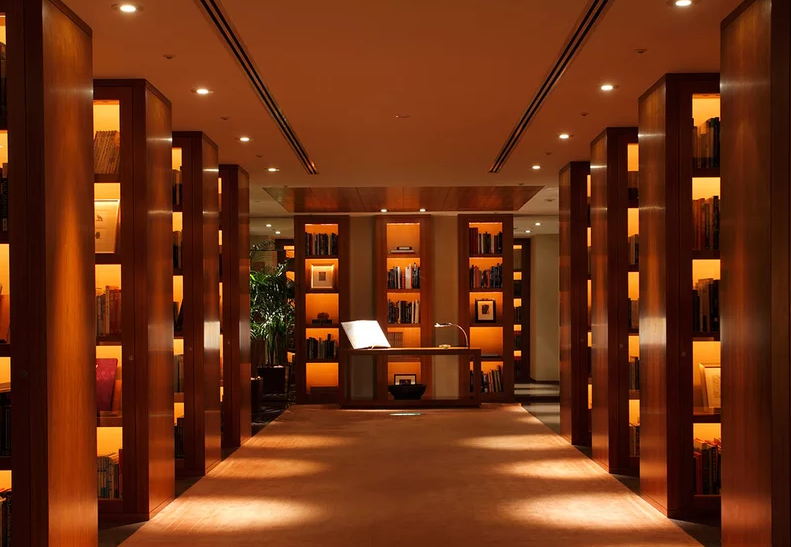
As soon as you walk into the enormous lobby of the Hyatt Regency Tokyo Hotel, you’re struck by the sight of three massive chandeliers hanging from the ceiling. The rooms, however, are much more modestly sized (as per Tokyo standards), but quite comfortable. The best bit of tech is “Pepper”, the hotel’s humanoid robot, who greets guests and provides suggestions. Doubles from 19,950 yen, room only.
For more on where to stay, check out our article on the best hotels in Tokyo.
Where to eat
Try some Michelin-starred freshly handmade soba noodles with vegetable and seafood tempura at Kyourakutei. Everything here is absolute perfection, from the consistency to flavour, texture to presentation. You won’t find greasy tempura here – the batter is wonderfully light and crispy. Grab a seat at the counter and watch everything get made right in front of you.
Japan isn’t always easy for vegetarians and vegans, but there’s no need to forego ramen altogether. T’s TanTan is conveniently tucked away at Tokyo station and is a popular spot to grab some tasty vegan ramen.
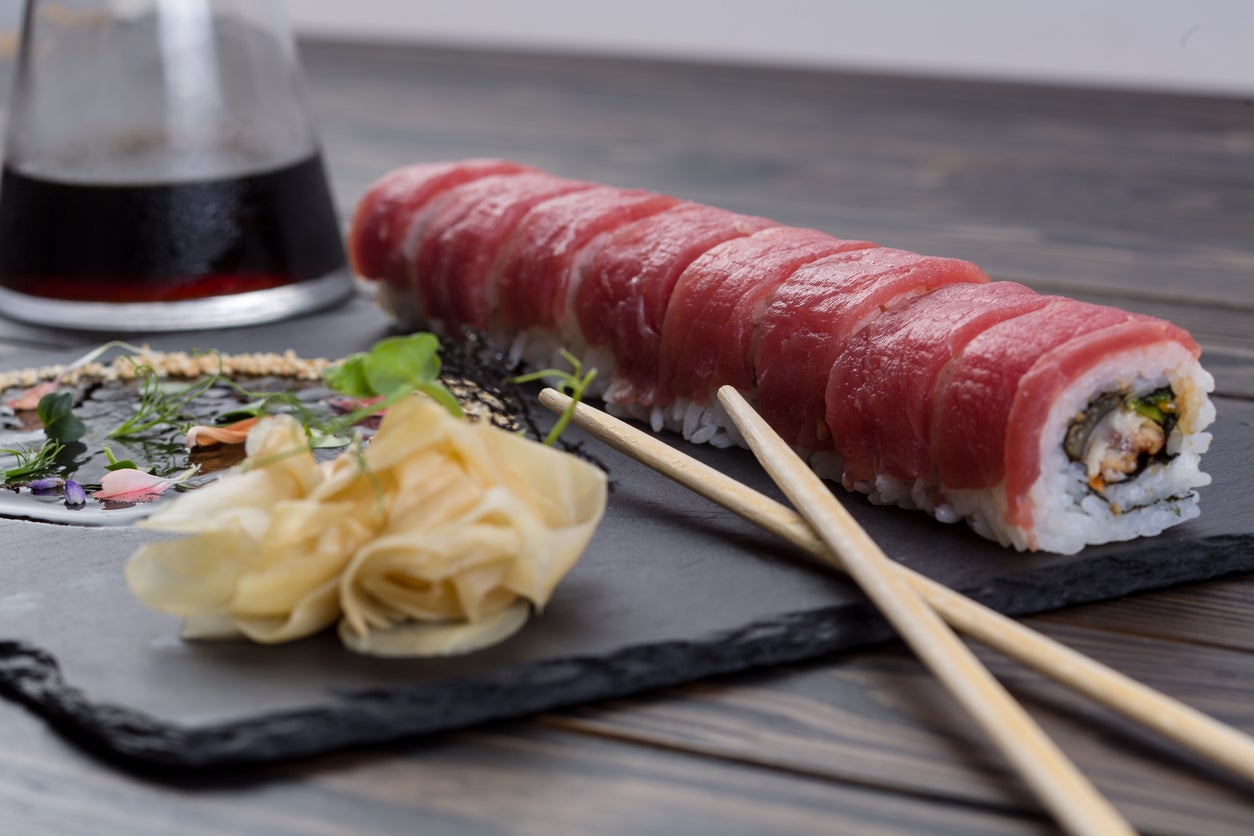
Fast food is best enjoyed standing. Just walk into one of the Standing Sushi Bars scattered around Tokyo and order sushi from the three chefs behind the counter. They’ll place the delicious (and affordable) sushi in front of you on a bamboo leaf; keep ordering until you’re satisfied.
For a more fine dining sushi experience, head over to Kyubey, where a personal chef will serve up omakase treats. Try the lunch menu for a less extravagant indulgence.
Where to drink
Patrons may come to Ginza Music Bar for the drinks, but they stay for the music. There’s a collection of over 3,000 records here, courtesy of music producer owner Shinichi Osawa.
Nestled on the 52nd floor of the Park Hyatt Tokyo, the darkly colourful New York Bar features floor-to-ceiling windows, nightly jazz, spectacular people-watching and a well-stocked bar with cognac, whiskies, wines and unique cocktail concoctions.
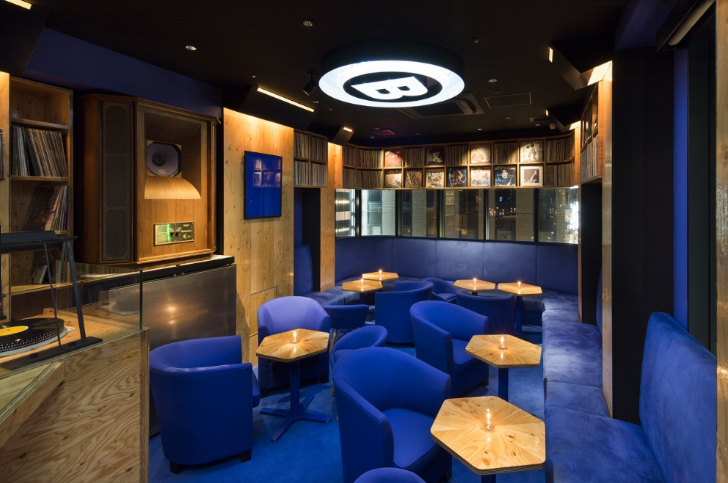
Zoetrope is a small, dimly lit whisky bar with an extensive collection of rare and unusual bottles. The bar’s cinema-inspired decor was created by the late legendary art director Takeo Kumura, and the bar’s owner often screens silent and animated films.
Where to shop
Akihabara (nicknamed Electric Town) is arguably the most famous shopping destination in Tokyo. Here you’ll find assorted knickknacks and gadgets, manga shops, collectibles, maid cafes (where waitresses dressed in maid costumes act as servants in a private home) and the massive Bic Camera department store, which has its own soon-to-be-stuck-in-your-head theme song.
If you’re looking for Japanese knives, dishes, cooking utensils or even plastic and wax food samples, you’ll find them all at one of dozens of stores that line Kappabashi street.
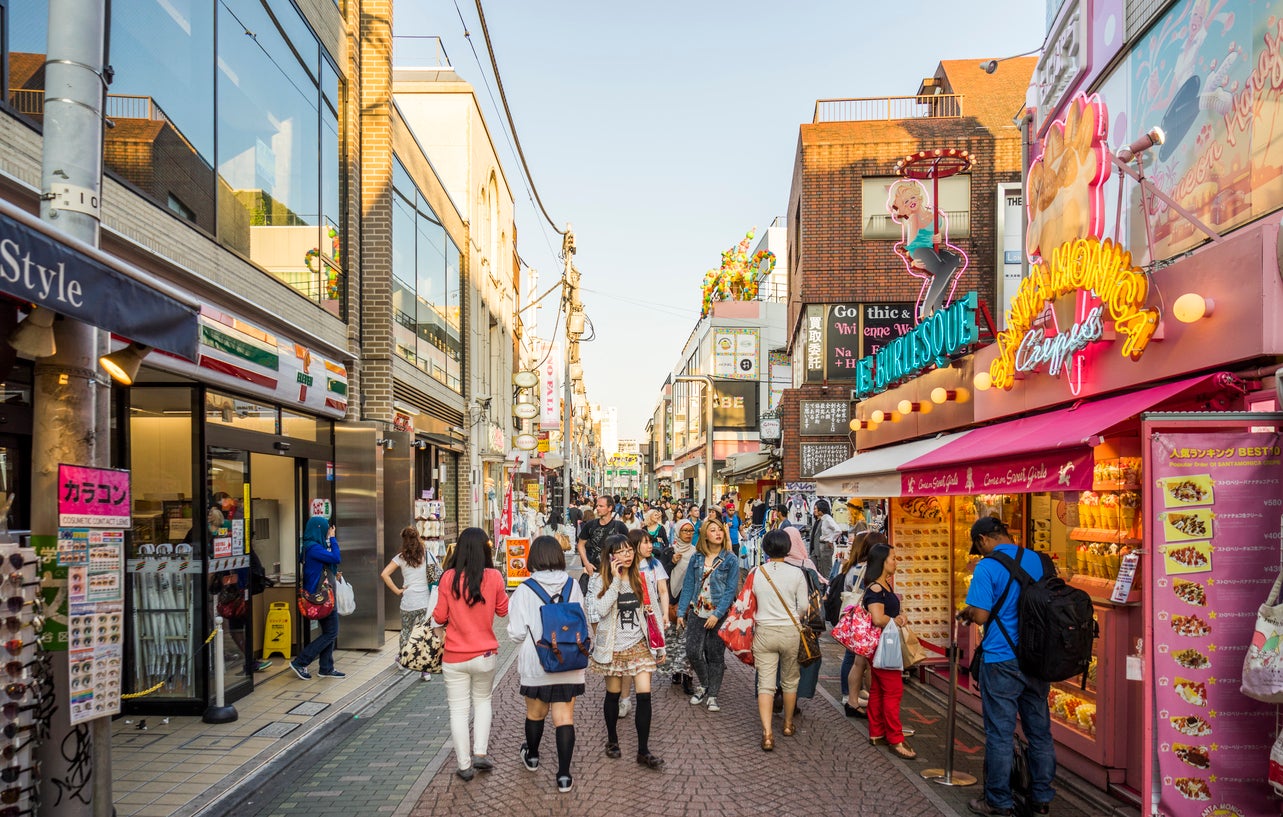
Harajuku is known as one of the busiest shopping districts in Japan. It’s also home to Laforet, an unusual mall which contains small boutiques selling innovative and eccentric fashions. Exhibitions are also held here.
Architectural highlight
Tokyo Skytree dominates the skyline – at 634 metres, it’s the tallest freestanding broadcasting tower in the world, and features a viewing platform, panoramic restaurant and cafe.
Nuts and bolts
Cheapest time to fly
What currency do I need?
The currency in Tokyo is the Japanese yen – there is roughly 149 yen to the pound.
What language do they speak?
The language is Japanese.
Should I tip?
Japan does not have a tipping culture and tips aren’t expected. In fact, they will more likely than not be refused.
What’s the time difference?
Tokyo is nine hours ahead of the UK and flight times average 11 hours and 45 minutes.
When’s best to go?
Cherry blossom season (March to May) or autumn.
Public transport
Tokyo can be explored by foot and by public transport, such as buses and trains. Taxis are also available, and although not inexpensive, are professional and honest.
Best view
The Tokyo Metropolitan Government Building has free observation decks that provide stunning panoramic views.
Insider tip
Compared to dinner, lunch can be a real steal at some of Tokyo’s finest restaurants.
Join our commenting forum
Join thought-provoking conversations, follow other Independent readers and see their replies
Comments